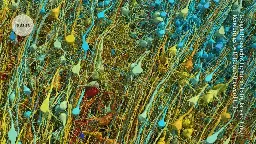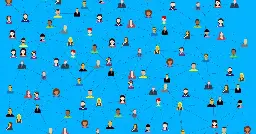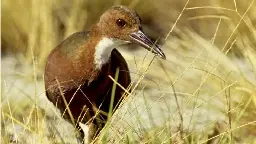Science
- FDA’s review of MDMA for PTSD highlights study bias and safety concernsarstechnica.com FDA’s review of MDMA for PTSD highlights study bias and safety concerns
FDA advisors will meet June 4 to discuss and vote on the therapy's effectiveness.

The comments section on this article is illuminating beyond the story itself (as is frequently the case on Ars) and worth a look.
Anecdotal experience alert!
I've been dealing with treatment-resistant major depression since before the term existed. Presumably, this stems from events when I was 7 and younger which unfortunately informed preferences and decisions starting in college and to some extent continue to this day. My parents were also quite detached, adding in the need to find in adulthood the sort of safety and connection one is supposed to grow up having already felt and thus able to recognize abusive analogs in partners with better than 0% accuracy.
Net result has been a lifetime of self-medication, sometimes with the hope of improvement, but far more frequently some way to just kick the can down the road to avoid feeling those things right now.
My introduction to MDMA came unsurprisingly from the rave scene in 1999. On balance, that period of heavy use (within a year, I'd sometimes roll three times a week, which no one is going to suggest is a good idea) was a net negative, with the silver lining that I did get to feel fleeting connections, but that transitory nature made the reality in between seem that much comparatively worse.
Any amount of research into psilocybin will lead to the phrase "set and setting." The first is short for mindset, the second obviously physical surroundings, including people. What I didn't know back in college was this concept itself, let alone that it applies to any psychoactive substance. At the time, I liked to say that E was a mood enhancer because if I was already feeling low, it was a shovel. And boy, howdy, did I find bottom with a cocktail one night that started with E at a party and then led to intentional contraindicated choices once home.
After a long period away from MDMA, I first rolled again in 2016, this time with my newish girlfriend at my house with chill music and climate control. Wildly different experience. This led to the same sort of experience in 2019 and again in 2021.
By mid-2022, the double whammy of pandemic loneliness and the abysmal job market had led to hospitalizations and detox trips as I hit the point of having a 30-pack of beer delivered to my apartment almost daily. The final detox led to a job, finally, after meeting the owner of a company there, which in turn led to my first year-plus of sobriety by choice.
At which point I was ready to finally tackle some of my longstanding issues instead of brushing them under the rug. Soon after, I heard about Michael Pollan's How to Change Your Mind miniseries on Netflix, leading to learning to grow shrooms while doing a fuckton of further research into intentionality and realistic expectations.
My first trip removed the rumination -- that constant background voice questioning every choice I made and even every thought -- I'd been dealing with for decades. It was a difficult trip emotionally, though I was never afraid through ineffable reassurance that everything would be fine. On the other side, I was able to take the first step to being present in the moment.
Over several more months, well-spaced trips diminished the frequency and urgency of unwanted memories surfacing, culminating in acceptance that I had to let go to move forward. The final trip of that series also revealed where I wanted to go, and I blew up my life, buying, building out and moving into a van, followed by leaving the soul-crushing job of sending out bills.
After a circuitous path, I've landed. Absolutely no medical professional would suggest what I did, but there's no accessible psychedelic-assisted therapy path I could have instead chosen, which is frankly intentional withholding of treatment. "SSRI's not working? We have no alternative, so you get to suffer!"
Last weekend, I did MDMA in a party setting again for the first time since college. It wasn't planned, but strange things happen in a gift economy with amazing people and music. After eating some shrooms the first night, I finally found my flow state, which I seem to have lost somewhere back in the '80s, allowing full presence.
Other than the inevitable serotonin crash Wednesday, I've felt amazing. Not manic, just happy with who I am and where I'm at and confident about my ability to continue finding my path forward.
After losing decades of my life, I don't want to see anyone else go through that, so I keep tabs (no pun intended) on psychedelic studies, and these MAPS trials seem to be going backward for wider experiments I know can benefit millions. It is so frustrating to have experimental malfeasance from an organization seemingly wanting to move forward but unable to avoid things like sexual assault and other cultlike behaviour from the fucking researchers.
Hopefully, these will lead to further studies with far more ethical guardrails instead of closing the door again.
- Hypersonic paranoia in Russia: As treason cases at the highest level of Russian science pile up, is Kremlin-sanctioned spy mania out of control?novayagazeta.eu Hypersonic paranoia. As treason cases at the highest level of Russian science pile up, is Kremlin-sanctioned spy mania out of control? — Novaya Gazeta Europe
On 21 May, a St. Petersburg court sentenced 77-year-old scientist Anatoly Maslov to 14 years in prison for treason. A leading global specialist on hypersonic physics with an illustrious career, Maslov had already spent two years in an FSB isolation unit while prosecutors prepared the case against ...

On 21 May, a St. Petersburg court sentenced 77-year-old scientist Anatoly Maslov to 14 years in prison for treason. A leading global specialist on hypersonic physics with an illustrious career, Maslov had already spent two years in an FSB isolation unit while prosecutors prepared the case against him for allegedly sharing details of Russia’s hypersonic weapons programme with a foreign government. Maslov has always maintained that the charges against him are baseless. Should he live to see the end of his sentence he will be 90 years old.
Several of Maslov’s colleagues at Novosibirsk’s Institute of Theoretical and Applied Mechanics have also been arrested. In 2021, the FSB detained 73-year-old scientist Alexander Kuranov for sharing state secrets with foreign intelligence services at a Russian-American research symposium in St. Petersburg. Kuranov admitted guilt, was sentenced to seven years in a maximum-security penal colony, and is believed to have testified against Maslov.
In 2022, 56-year-old Alexander Shiplyuk was detained and transferred to a detention facility in Moscow for allegedly sharing classified hypersonic research at a conference in China, while Valery Zvegintsev, a 79-year-old hypersonic aerodynamic specialist, was detained by the FSB and placed under house arrest in 2023 for an article he wrote for an Iranian science journal. Both are currently awaiting trial.--
The summer of 2022 saw three leading Russian scientists arrested one after the other. Perhaps the most dramatic case was that of Dmitry Kolker, a laser physicist who was arrested while battling stage four pancreatic cancer in hospital. Forcibly removed from his bed and flown to Moscow’s notorious Lefortovo Prison, Kolker died two days later.
Maslov himself was detained that July in the city of Novosibirsk, where he worked as chief researcher at the Khristianovich Institute of Theoretical and Applied Mechanics, part of the Siberian Branch of the Russian Academy of Sciences. Maslov’s research focus was gas dynamics, and his discoveries were instrumental in the development of hypersonic weapons — weapons which travel many times faster than the speed of sound.
Russia’s Federal Security Service (FSB) said it had reason to believe that Maslov had passed secret hypersonic weapons research to German intelligence in 2014. While very little is known about the case, it appears that the FSB found out about the alleged transfer of classified documents eight years after it occurred. Due to the state secrets involved, his trial was conducted behind closed doors.
State prosecutors requested Maslov be given a 17-year sentence in a high-security prison colony, something Maslov’s defence team baulked at, given that the 77-year-old had already suffered a heart attack during his two-year stint in pretrial detention, and argued that their client would be unable to serve a sentence of even half that duration.
> Given Vladimir Putin’s pride that Russia’s hypersonic weapons are currently the best in the world, it’s perhaps unsurprising that researchers working in the field have borne the brunt of his paranoia.
Maslov’s defence lawyer argued a crime could not possibly have taken place, as even if Maslov had passed on the information he was charged with sharing, it wasn’t classified — a fact the FSB appears simply to have ignored. In a prepared statement, Maslov stressed that he had dedicated his entire life to his family and to the national science programme and categorically denied any wrongdoing.
Yevgeny Smirnov, a lawyer for First Department, a legal advocacy group that specialises in closed trials, described the sentence as part of the “trend towards harsher punishments” in the Russian judicial system since the war in Ukraine began. He said that the 14 years Maslov had received was “perhaps a record” for a sentence given to a scientist and added that “the worsening trend in cases brought against scientists accused of treason is in line with the general trend for anyone charged with threatening national security”.
Asked about Maslov’s chances of surviving a prison sentence of such a length, Smirnov struck a surprisingly practical tone. “In this case, you know, everything depends very much on the person, on the support they receive, and on the penal colony they end up in. I don’t know where Maslov will serve his sentence; he will only be transferred after his appeal,” Smirnov continued. “But again, he’s 77 years old, and he has spent two years behind bars. According to his lawyers, his health has deteriorated during that time. And a sentence of 14 years, I’m afraid, may become a life sentence, just taking into account average life expectancy in Russia and the medicine available to prisoners.”
While Smirnov acknowledged that Maslov’s case had gone on for so long because the defence team hadn’t given up hope, he also said that treason charges were very rarely overturned.
But Maslov is not the only scientist in his field to have been prosecuted. Eleven Russian specialists in hypersonic technology have been convicted of treason since 2015. Given Vladimir Putin’s pride that Russia’s hypersonic weapons are currently the best in the world, it’s perhaps unsurprising that researchers working in the field — three of whom have died while awaiting trial — have borne the brunt of his paranoia.
Indeed, several of the Russian hypersonic researchers responsible for the country’s global preeminence in the field are now languishing in prison or are awaiting their fate in pretrial detention. Many were involved in Transhyberian, an officially sanctioned collaborative research project with the EU, according to scientific journal T-Invariant.
> “We are not only afraid for the fate of our colleagues. We simply don’t know how to continue doing our job.”
Moscow State Technical University professor, Vladimir Lapygin, 74, was the first to be arrested and charged with passing state secrets to China. Though Lapygin insisted he was innocent, he was found guilty and sentenced to seven years in a high-security penal colony in 2016, and was recognised as a political prisoner by Russian human rights organisation Memorial, which described him as a victim of “spy-mania designed to support the image of ‘a Russia encircled by enemies’ created by state propaganda”.
In 2018, 75-year-old scientist Viktor Kudryavtsev was arrested for allegedly passing classified information to the Belgian Von Karman Institute for Fluid Dynamics, where the Transhyberian project was based. A year later, the FSB arrested Roman Kovalyov, also for allegedly passing classified Russian hypersonic research to the Von Karman Institute. While Kudryavtsev maintained his innocence, Kovalyov pleaded guilty and testified against Kudryavtsev after allegedly being pressured by FSB investigator Alexander Chaban. However, in a tragic turn, the two scientists were subsequently diagnosed with cancer and both died shortly after being released for treatment.
In 2020, scientist Anatoly Gubanov was imprisoned for allegedly sharing reports containing Russian state secrets to his supervisor on another international hypersonics project HEXAFLY-INT. According to his lawyer, Gubanov was subjected to intense psychological pressure by investigators in the run up to his admission of guilt and his eventual decision to make a plea deal.
Six months after Gubanov’s arrest, it was the turn of Russia’s leading hypersonic aircraft specialist Valery Golubkin to be prosecuted. The charges he faced also related to HEXAFLY-INT, though Golubkin maintained his innocence and was sentenced to 12 years in a maximum security penal colony, where he is currently awaiting his appeal hearing. In an unexpected turn of events, however, Gubanov ultimately broke the terms of his deal and refused to give evidence against Golubkin in court, meaning that he too was then sentenced to 12 years in a high-security penal colony.
In 2021, the FSB detained 73-year-old scientist Alexander Kuranov for sharing state secrets with foreign intelligence services at a Russian-American research symposium in St. Petersburg. Kuranov admitted guilt, was sentenced to seven years in a maximum-security penal colony, and is believed to have testified against Maslov.
And still the arrests continue. In December, Vladislav Galkin, an associate professor on hypersonic technologies at Tomsk Polytechnic University was detained in Novosibirsk and is currently awaiting trial.
Several more of Maslov’s erstwhile colleagues at Novosibirsk’s Institute of Theoretical and Applied Mechanics have also been arrested. In 2022, 56-year-old Alexander Shiplyuk was detained and transferred to a detention facility in Moscow for allegedly sharing classified hypersonic research at a conference in China, while Valery Zvegintsev, a 79-year-old hypersonic aerodynamic specialist, was detained by the FSB and placed under house arrest in 2023 for an article he wrote for an Iranian science journal. Both are currently awaiting trial.
In 2023, after yet another arrest, researchers at the Institute of Theoretical and Applied Mechanics published an open letter to the Russian authorities in which they stressed the patriotism of Maslov, Shiplyuk and Zvegintsev. The letter also suggested that the men had been prosecuted for sharing research with the wider international community, which they said was considered “an obligatory component of conscientious and high-quality scientific activity”.
The authors of the letter, which is no longer available online and to which the authorities have not replied, went on to say that: “We are not only afraid for the fate of our colleagues. We simply don’t know how to continue doing our job.”
The silence from the wider Russian scientific community has been deafening, however, with no other institutes or organisations making public statements of support for the scientists implicated in the Novosibirsk treason cases. Indeed, for now, the Institute of Theoretical and Applied Mechanics appears to be the sole body unafraid to speak up for its persecuted colleagues.
- Better depression relief with electromagnetic treatmentstanmed.stanford.edu Better depression relief with electromagnetic treatment
Safer, more targeted electromagnetic treatment can bring faster, longer-lasting relief for people with depression.

- Why are algorithms called algorithms? A brief history of the Persian polymath you’ve likely never heard oftheconversation.com Why are algorithms called algorithms? A brief history of the Persian polymath you’ve likely never heard of
Our modern lives are influenced by algorithms at every step. We can trace this influence back more than 1,200 years ago – to a Muslim mathematician.

By Debbie Passey, Digital Health Research Fellow, The University of Melbourne
Algorithms have become integral to our lives. From social media apps to Netflix, algorithms learn your preferences and prioritise the content you are shown. Google Maps and artificial intelligence are nothing without algorithms.
So, we’ve all heard of them, but where does the word “algorithm” even come from?
Over 1,000 years before the internet and smartphone apps, Persian scientist and polymath Muhammad ibn Mūsā al-Khwārizmī invented the concept of algorithms.
In fact, the word itself comes from the Latinised version of his name, “algorithmi”. And, as you might suspect, it’s also related to algebra.
Largely lost to time
Al-Khwārizmī lived from 780 to 850 CE, during the Islamic Golden Age. He is considered the “father of algebra”, and for some, the “grandfather of computer science”.
Yet, few details are known about his life. Many of his original works in Arabic have been lost to time.
It is believed al-Khwārizmī was born in the Khwarazm region south of the Aral Sea in present-day Uzbekistan. He lived during the Abbasid Caliphate, which was a time of remarkable scientific progress in the Islamic Empire.
Al-Khwārizmī made important contributions to mathematics, geography, astronomy and trigonometry. To help provide a more accurate world map, he corrected Alexandrian polymath Ptolemy’s classic cartography book, Geographia.
He produced calculations for tracking the movement of the Sun, Moon and planets. He also wrote about trigonometric functions and produced the first table of tangents.
Al-Khwārizmī was a scholar in the House of Wisdom (Bayt al-Hikmah) in Baghdad. At this intellectual hub, scholars were translating knowledge from around the world into Arabic, synthesising it to make meaningful progress in a range of disciplines. This included mathematics, a field deeply connected to Islam.
The ‘father of algebra’
Al-Khwārizmī was a polymath and a religious man. His scientific writings started with dedications to Allah and the Prophet Muhammad. And one of the major projects Islamic mathematicians undertook at the House of Wisdom was to develop algebra.
Around 830 CE, Caliph al-Ma’mun encouraged al-Khwārizmī to write a treatise on algebra, Al-Jabr (or The Compendious Book on Calculation by Completion and Balancing). This became his most important work.
At this point, “algebra” had been around for hundreds of years, but al-Khwārizmī was the first to write a definitive book on it. His work was meant to be a practical teaching tool. Its Latin translation was the basis for algebra textbooks in European universities until the 16th century.
In the first part, he introduced the concepts and rules of algebra, and methods for calculating the volumes and areas of shapes. In the second part he provided real-life problems and worked out solutions, such as inheritance cases, the partition of land and calculations for trade.
Al-Khwārizmī didn’t use modern-day mathematical notation with numbers and symbols. Instead, he wrote in simple prose and employed geometric diagrams:
> Four roots are equal to twenty, then one root is equal to five, and the square to be formed of it is twenty-five.
In modern-day notation we’d write that like so:
> 4x = 20, x = 5, x2 = 25
Grandfather of computer science
Al-Khwārizmī’s mathematical writings introduced the Hindu-Arabic numerals to Western mathematicians. These are the ten symbols we all use today: 1, 2, 3, 4, 5, 6, 7, 8, 9, 0.
The Hindu-Arabic numerals are important to the history of computing because they use the number zero and a base-ten decimal system. Importantly, this is the numeral system that underpins modern computing technology.
Al-Khwārizmī’s art of calculating mathematical problems laid the foundation for the concept of algorithms. He provided the first detailed explanations for using decimal notation to perform the four basic operations (addition, subtraction, multiplication, division) and computing fractions.
This was a more efficient computation method than using the abacus. To solve a mathematical equation, al-Khwārizmī systematically moved through a sequence of steps to find the answer. This is the underlying concept of an algorithm.
Algorism, a Medieval Latin term named after al-Khwārizmī, refers to the rules for performing arithmetic using the Hindu-Arabic numeral system. Translated to Latin, al-Khwārizmī’s book on Hindu numerals was titled Algorithmi de Numero Indorum.
In the early 20th century, the word algorithm came into its current definition and usage: “a procedure for solving a mathematical problem in a finite number of steps; a step-by-step procedure for solving a problem”.
Muhammad ibn Mūsā al-Khwārizmī played a central role in the development of mathematics and computer science as we know them today.
The next time you use any digital technology – from your social media feed to your online bank account to your Spotify app – remember that none of it would be possible without the pioneering work of an ancient Persian polymath.
- Buy Tramadol Online and Get Free Domestic Deliveryuspharmastore.com Buy Tramadol Online From Secure Pharmacy us pharma store
Buy Tramadol Online From Secure Pharmacy we sell ADHD, Anxiety, and Pain medications online without any prescription with overnight delivery at us pharma store.

ORDER NOW HERE :- https://uspharmastore.com/product-category/buy-tramadol-online
Visit uspharmastore.com to get Tramadol online at the lowest possible cost. You might save up to 10% on your prescription medication with our Tramadol discounts. When you buy Tramadol online from uspharmastore.com, you will get the best deal on your prescription. However, be sure to enter the correct dosage, type, and amount to receive the most accurate discounted pricing.
✅Domestic shipment within the United States
✅Quick Shipping
✅Secure Payment Methods
✅We guarantee full satisfaction
✅Save 10% by utilizing the MEDS10 code
✅Enjoy free delivery within one working day
- Buy Adderall Online Speedy Delivery at Your Doorstep

Click Here to order Now: https://medixway.com/adhd/adderall/
Buy Adderall online, it is a prescription drug comprising amphetamine and dextroamphetamine and falls under the category of stimulants. It is commonly utilized for managing ADHD and narcolepsy. Research indicates that Adderall and Adderall XR can enhance attention, and focus, and reduce impulsivity. A significant percentage of children with ADHD, around 75-80%, exhibit improved symptoms when treated with stimulants like Adderall. Moreover, Adderall is effective in promoting daytime alertness in narcolepsy patients, although relevant studies are scarce.
https://forum.enscape3d.com/wcf/index.php?user/66516-buy-adderall-online-here/ https://forum.enscape3d.com/wcf/index.php?user/66638-buy-adderall-online-sale/ https://forum.enscape3d.com/wcf/index.php?user/66651-buy-adderall-online-best/ https://forum.enscape3d.com/wcf/index.php?user/66176-buy-adderall-online-with/ https://kbin.social/m/science/t/1048905/Buy-Adderall-For-ADHD-Rapid-Delivery https://www.ticketleap.events/tickets/buy-adderall-online-1752458260/buy-adder-ll-online-over-the-counter https://www.ticketleap.events/tickets/buy-adderall-online-1752458260/to-improve-focus-buy-adderall-online https://www.ticketleap.events/tickets/buy-adderall-online-1752458260/buy-adderall-online-confirmed-same-day-delivery https://www.eventbrite.com/e/buy-adderall-online-tickets-911235970317?aff=oddtdtcreator https://www.eventbrite.com/e/buy-adderall-online-instant-delivery-tickets-911304645727?aff=oddtdtcreator
- Harassment of scientists is surging — institutions aren’t sure how to helpwww.nature.com Harassment of scientists is surging — institutions aren’t sure how to help
As researchers increasingly face many kinds of attack over their work, there is debate about how to support and protect them.

As researchers increasingly face many kinds of attack over their work, there is debate about how to support and protect them.
As a vocal advocate of vaccinations for public health, Peter Hotez was no stranger to online harassment and threats. But then the abuse showed up on his doorstep.
It was a Sunday during a brutal Texas heatwave in June 2023 when a man turned up at Hotez’s home, filming himself as he shouted questions at the scientist, who is a paediatrician and virologist at Baylor College of Medicine in Houston, Texas.
Because of the long-running online and real-life abuse he has faced, Hotez now has the Texas Medical Center Police, Houston Police Department and Harris County Sheriff’s Office on speed dial, an agent tasked to him from the FBI and extra security whenever he speaks publicly.
“This is a very powerful adversarial force that is seeking to undermine science, and now it’s not only going after the science. It’s going after the scientists,” he says.
Hotez is an especially well-known scientist, but his experience is far from unique. Every day around the world, scientists are being abused and harassed online. They are being attacked on social media and by e-mail, telephone, letter and in person. And their reputations are being smeared with baseless accusations of misconduct. Sometimes, this escalates to real-world confrontations and attacks.
Such threats to scientists aren’t new; those researching climate change and gun control, for example, have endured abuse for decades. However, since the start of the COVID-19 pandemic, there has been an unprecedented escalation in the intensity and frequency of attacks, and the range of targets, say researchers. Anthony Fauci, the former director of the US National Institute of Allergy and Infectious Diseases and one of the most high-profile infectious-diseases specialists during the pandemic, was subject not just to online trolling, but to two credible attempts on his life that prompted the arrests of two people. Virologist Marc Van Ranst at the Catholic University of Leuven in Belgium and his family were moved to a safe house after a far-right soldier hunted them.
It’s not just scientists with a public profile in the crosshairs; those targeted include mathematical disease modellers, pharmacologists, physicists and fluid-dynamics researchers, who have never previously had any media attention.
"You don’t even necessarily have to be someone who’s active on social media,” says Sarah Sobieraj, a sociologist researching digital abuse and harassment at Tufts University in Medford, Massachusetts. “The visibility that brings attention to you could come from any number of sources that are not of your own doing.” Scientists have been attacked for private lectures and conference presentations that are shared online, studies published in journals, research work done for government agencies and even private Facebook posts shared publicly without their consent.
Researchers say that the surge in abuse is showing no signs of slowing down, even as the pandemic itself slips from the headlines. “All the data that we do have points to it increasing rather than decreasing; it’s certainly getting quite prolific,” says Lyndal Byford, director of news and partnerships at the Australian Science Media Centre in Adelaide. “I’m hearing a lot from universities and research organizations that they’re seeing it as an increasing problem.”
However, universities and research institutions are often slow to respond to this fast-moving threat, and the support they offer can frequently fall short, say many researchers who have experienced harassment. “Too often, we’re off on our own, not getting the backing of the institutions,” says Hotez.
This issue has led to a court case in New Zealand, in which microbiologist Siouxsie Wiles is suing her employer, the University of Auckland, over the way it has responded to the ongoing harassment she has experienced since early 2020, which included online attacks and people confronting her in public. Wiles’s lawsuit alleges that the university “failed in their duty to keep her safe in her employment”. (The university says that it took numerous steps to ensure Wiles’s safety.)
The lawsuit and other high-profile cases have prompted a broader discussion among researchers, universities and other organizations about how best to respond to this kind of harassment. There is a growing recognition that online abuse and other types of attack can cause serious harm to individual scholars and to universities and research institutions. If researchers can’t communicate openly without facing abuse, “then really one of our core missions is being quite substantially damaged”, says Emma Johnston, a marine ecologist and deputy vice-chancellor of research at the University of Sydney, Australia.
Supporting scientists
Public-health researcher Tara Kirk Sell at the Johns Hopkins Bloomberg School of Public Health in Baltimore, Maryland, became a target for online harassment and abuse after she started appearing on conservative television networks at the start of the pandemic in 2020 to talk about COVID-19. She and her colleague Beth Resnick, also a public-health researcher, decided to look into how many other people at Bloomberg were experiencing harassment; Sell was far from alone.
“We’re lucky,” says Sell, about the supportive leadership at their institution. The researchers were asked if they had any ideas about how to tackle the issue. So they put together a working group of people from across the university, and interviewed people who had experienced abuse to find out what could help.
“The most important thing really is that people feel like their institution supports them,” Sell says. The challenge is getting that support to them quickly and easily, with as few barriers to access as possible.
The approach they chose was to set up a dedicated e-mail address that staff can forward messages to if they receive abusive communications or posts on social media. That triggers an automatic alert to the campus security team as well as to Sell and Resnick. The staff member gets an immediate automated response with information about institutional support they can access, including counselling, the communications team and emergency-contact details for the security team.
Security will automatically get in touch with the affected person in two business days. Sell and Resnick also personally contact the staff member to make sure they’re all right.
That ‘one-stop shop’ approach is crucial for dealing with online abuse and harassment, says Byford, because otherwise people facing these problems are at risk of falling between the cracks of organizational structures. “Everybody sees that it’s a big issue, but it’s not always clear who within that university structure is the right person to take control,” she says.
A multi-disciplinary team approach is key for handling harassment, says Bram van der Meer, a threat-assessment specialist at Dantes Psychology Services in Voorburg, the Netherlands, which works with organizations to manage problematic workplace situations. Van der Meer calls these groups ‘social-safety expert teams’ and says they should include people from various departments such as security, human resources, legal and university leadership. Such teams would have expertise and training in swiftly triaging threats and deciding on the best course of action, while also supporting an individual who is on the receiving end of the abuse.
But social-safety expert teams are no use if people don’t know about them or are hesitant to report to them. “There has to be a lot of advertisement about the existence of this group,” van der Meer says. He suggests that the university have an ambassador for the programme, who can help to raise the profile of the support service and encourage staff to make use of it.
Often people delay reporting harassment — or don’t report at all — until a situation escalates. Van der Meer says one of the most common reasons for this is that individuals are worried about the professional consequences of raising an issue, such as what their colleagues will think. They also worry that they are overstating or exaggerating the problem.
Sobieraj says women are often wary of reporting abuse and harassment, because they don’t want to be perceived as being ‘whiny’. The material itself can also be embarrassing to talk about. “If somebody has sent you a doctored image of yourself that’s pornographic or the commentary is talking about your presumed sexual behaviour, this is kind of embarrassing to talk about, or humiliating,” she says.
But under-reporting can hamper an institution’s ability to build a true picture of the problem and understand how serious or widespread it is. “I only see when one person e-mails me,” says Sell about receiving a harassing message. ”But I don’t know if that person’s e-mailing 50 other people in the department.”
Knowing about shared experiences also has its benefits. Johnston says the University of Sydney has found that being able to speak to others who have gone through the same thing can help those who are experiencing abuse. “They know that they’re not alone, and they form their own support network, they can share best responses and resilience tricks,” she says.
Online abuse and harassment is isolating, and can lead to serious psychological and professional harm, particularly for individuals who are already vulnerable or at a systemic disadvantage, says Alice Marwick, a communications researcher at the University of North Carolina at Chapel Hill. “People who are first-generation academics, or people of colour, or queer folks or women, these are already people who are bearing enormous burdens.”
Marwick thinks that abuse is discouraging researchers from working on certain subjects that might attract unwanted attention. “I think that there’s a lot of people who are interested in studying controversial topics who don’t want to study them because they’re worried about this kind of backlash,” she says. She and her colleagues have published a guide to help researchers and academic institutions deal with harassment.
Tailored strategies
The stereotype of an Internet troll has long been of a lone individual hiding behind anonymity. But as Hotez’s experience has shown, the harassment can come from all levels of society. Sometimes it comes from other academics, even at the same institution. Sometimes it can come in the form of spurious complaints of research misconduct made through official channels.
Such attacks warrant different strategies that might include a public statement of support from the scientist’s institution. “We put out statements in support about academics’ right to present their work, free from harassment, and the right to present their expertise,” says Johnston, although she adds that the university doesn’t take a political stance or position on the topic at issue.
And releasing a statement of support can be complicated if the attacks come from the political sphere, because universities, funding bodies and other scientific institutions are expected to remain politically neutral. During the pandemic, scientists in the United States often came under criticism from right-leaning politicians, which led to cases of harassment.
In the United States, says Hotez, “the aggression against science and scientists is coming from one political party, and the extreme element of one political party”. So when scientific institutions remain neutral, that policy “favours the tormentors”, says Hotez. “More often than not, the scientists are kind of hung out to dry.”
Politically motivated harassment has happened in other countries, too. For example, supporters of Brazil’s former president Jair Bolsonaro tried to sue microbiologist and science communicator Natalia Pasternak for her criticisms of the Bolsonaro government’s response to COVID-19. In New Zealand, far-right activists opposed the government’s actions during the pandemic, and scientists involved in COVID-19 research. “We saw coordinated, targeted, networked abuse,” says Natalia D’Souza, a consultant on cyberbullying and cyberabuse, and board member of Netsafe, a non-profit organization focused on online safety in Auckland, New Zealand. “What comes to mind is particularly alt-right groups, who co-opt research either to serve their own agenda or to attack and discredit research and academics themselves.”
Spurious complaints of misconduct are another challenge for scientific institutions to manage. Johnston says the University of Sydney takes all complaints seriously and will follow standard policies and procedures in the first instance. But if there are repeated complaints by or against the same individual, and no new material is provided, the university will ask the complainant to cease and desist. “We can also send messages to key people who have received this information, that we’ve done a full investigation and we have found no substance to their complaints,” she says. “That’s a proactive measure to help protect their reputation.”
It can be particularly difficult to deal with harassment that comes from, or is prompted by the comments of, another academic. “Some of the most impactful abuse and harassment comes from peers and colleagues,” Byford says. It’s also been a source of frustration for Hotez, seeing his equally respected peers spreading what he sees as disinformation.
Geneticist Jack Heinemann at the University of Canterbury in Christchurch, New Zealand, who was an expert witness for Wiles’s case, says that academic freedom does allow people to be wrong, as long as they don’t use defamatory language or promote violence when criticizing others’ work. “The most appropriate way to deal with somebody who is squarely within their academic freedom is to use your academic freedom to confront them.”
But Heinemann argues that university researchers who are communicating about their field of expertise should be supported and protected while doing so, rather than being cloistered or advised to limit their communications. “Otherwise, what you do is, you pit a harm against an activity,” he says. “You put yourself into the position where you’re constantly trading off academic freedom for safety.”
- Microplastics found in every human testicle in studywww.theguardian.com Microplastics found in every human testicle in study
Scientists say discovery may be linked to decades-long decline in sperm counts in men around the world

- How Much Research Is Being Written by Large Language Models?hai.stanford.edu How Much Research Is Being Written by Large Language Models?
New studies show a marked spike in LLM usage in academia, especially in computer science. What does this mean for researchers and reviewers?

- “Nothing” doesn’t exist. Instead, there is “quantum foam”bigthink.com "Nothing" doesn't exist. Instead, there is "quantum foam"
Quantum physics shows that there is no such thing as "nothing." Even in a vacuum, particles can blink into and out of existence.

- Why do people hate people? - A question by 'curious kid' Daisy, age 9, Lake Oswego, Oregontheconversation.com Why do people hate people?
It can be easy to mistake feelings like fear and anger as hate. When biases are acted out in harmful ways, however, speaking up can help stop hate from getting worse.

Understanding hate as an emotional response can help you recognize your feelings about something or someone and be curious about where those feelings are coming from. This awareness will give you time to gather more information and imagine the other person’s perspective.
So what is hate and why do people hate? There are many answers to these questions.
- Cubic millimetre of brain mapped in spectacular detailwww.nature.com Cubic millimetre of brain mapped in spectacular detail
Google scientists have modelled a fragment of the human brain at nanoscale resolution, revealing cells with previously undiscovered features.

> Google scientists have modelled a fragment of the human brain at nanoscale resolution, revealing cells with previously undiscovered features.
- Baby born deaf can hear after breakthrough gene therapywww.cuh.nhs.uk Baby born deaf can hear after breakthrough gene therapy
Baby born deaf can hear after breakthrough gene therapy

Opal Sandy from Oxfordshire in the UK is the first patient treated in a global gene therapy trial, which shows “mind-blowing” results. She is the first British patient in the world and the youngest child to receive this type of treatment.
Opal was born completely deaf because of a rare genetic condition, auditory neuropathy, caused by the disruption of nerve impulses travelling from the inner ear to the brain.
Within four weeks of having the gene therapy infusion to her right ear, Opal responded to sound, even with the cochlear implant in her left ear switched off.
Clinicians noticed continuous improvement in Opal’s hearing in the weeks afterwards and at 24 weeks confirmed close to normal hearing levels for soft sounds, such as whispering, in her treated ear.
Now 18 months old, Opal can respond to her parents’ voices and can communicate words such as “Dada” and “bye-bye.”
"These results are spectacular and better than I expected. Gene therapy has been the future in otology and audiology for many years and I’m so excited that it is now finally here," says Professor Manohar Bance, an ear surgeon at Cambridge University Hospitals NHS Foundation Trust and chief investigator of the trial.
Professor Bance hopes that this is the start of a new era for gene therapies for the inner ear and many types of hearing loss.
- The fusion of two sisters into a single woman suggests that human identity is not in our DNAenglish.elpais.com The fusion of two sisters into a single woman suggests that human identity is not in our DNA
The biologist Alfonso Martínez Arias defends that genes do not define the uniqueness of a person, citing the example of Karen Keegan, who has two genomes

- Amazing Detailed view of Phobos, A moon of Marswww.infoterkiniviral.com Amazing Detailed view of Phobos, A moon of Mars
One of the most mysterious moons in our solar system, Phobos, is tucked away in the cosmic ballet that orbits Mars
One of the most mysterious moons in our solar system, Phobos, is tucked away in the cosmic ballet that orbits Mars
- An amazing footage was captured during a Total solar eclipsewww.infoterkiniviral.com An amazing footage was captured during a Total solar eclipse
Something magical happens in the sky when the moon moves between the Earth and the sun and casts its shade on our world

Something magical happens in the sky when the moon moves between the Earth and the sun and casts its shade on our world
- Here's the horrifying Real sound of Apollo 1 Disaster in 1967.www.infoterkiniviral.com Here's the horrifying Real sound of Apollo 1 Disaster in 1967.
The Apollo 1 accident is a sombre reminder in the history of space exploration of the dangers and difficulties that come with human

The Apollo 1 accident is a sombre reminder in the history of space exploration of the dangers and difficulties that come with human
- Spending $150 billion, Is the ISS an ambition?www.infoterkiniviral.com Spending $150 billion, Is the ISS an ambition?
The International Space Station (ISS) is a remarkable structure that showcases the incredible ingenuity and ambition of humanity

The International Space Station (ISS) is a remarkable structure that showcases the incredible ingenuity and ambition of humanity
- This is what would happen if humans moved and lived on Marswww.infoterkiniviral.com This is what would happen if humans moved and lived on Mars
Mars, as the fourth planet from the Sun in our solar system, has been the subject of intense prediction, study, and scientific research by scientists

Mars, as the fourth planet from the Sun in our solar system, has been the subject of intense prediction, study, and scientific research by scientists
- Planet Nine, is it real and why hasn't anyone ever seen it?www.infoterkiniviral.com Planet Nine, is it real and why hasn't anyone ever seen it?
The origin of Planet Nine can be traced back to the early 20th century, when Percival Lowell made groundbreaking contributions in this field

The origin of Planet Nine can be traced back to the early 20th century, when Percival Lowell made groundbreaking contributions in this field
- This Is The best way to set up the internet on Mars?www.infoterkiniviral.com This Is The best way to set up the internet on Mars?
Novel methods are being investigated to overcome these obstacles and improve communication on Mars to resemble terrestrial experiences

Novel methods are being investigated to overcome these obstacles and improve communication on Mars to resemble terrestrial experiences
- Unraveling the mystery of the last Neanderthals' ancient lifewww.infoterkiniviral.com Unraveling the mystery of the last Neanderthals' ancient life
The Neanderthal species remains an intriguing enigma for scientists and historians during their extensive exploration of time

The Neanderthal species remains an intriguing enigma for scientists and historians during their extensive exploration of time
- Boeing is getting ready to send astronauts into space with their latest capsulewww.infoterkiniviral.com Boeing is getting ready to send astronauts into space with their latest capsule
s it is ready to launch astronauts to the International Space Station (ISS) in cooperation with NASA

s it is ready to launch astronauts to the International Space Station (ISS) in cooperation with NASA
- The face of a Neanderthal from 75,000 years ago has been found by scientistswww.infoterkiniviral.com The face of a Neanderthal from 75,000 years ago has been found by scientists
A woman in her 40s was meticulously arranged in a gully and her left hand curled beneath her head when she was laid to rest in a cave in Iraqi Kurdist

cross-posted from: https://fedia.io/m/science@lemmy.ml/t/770251
> A woman in her 40s was meticulously arranged in a gully and her left hand curled beneath her head when she was laid to rest in a cave in Iraqi Kurdist
- Physics confirms that the enemy of your enemy is, indeed, your friendnews.northwestern.edu Physics confirms that the enemy of your enemy is, indeed, your friend
Most people have heard the famous phrase “the enemy of my enemy is my friend.” Now, Northwestern University researchers have used statistical physics to confirm the theory that underlies this famous axiom.<br />

In the 1940s, Austrian psychologist Fritz Heider introduced social balance theory, which explains how humans innately strive to find harmony in their social circles. According to the theory, four rules — an enemy of an enemy is a friend, a friend of a friend is a friend, a friend of an enemy is an enemy and, finally, an enemy of a friend is an enemy — lead to balanced relationships.
Using groups of three people, Heider’s social balance theory maintains the assumption that humans strive for comfortable, harmonious relationships. In balanced relationships, all people like each other. Or, if one person dislikes two people, those two are friends. Imbalanced relationships exist when all three people dislike each other, or one person likes two people who dislike each other, leading to anxiety and tension. Studying such frustrated systems led to the 2021 Nobel Prize in physics to Italian theoretical physicist Giorgio Parisi, who shared the prize with climate modelers Syukuro Manabe and Klaus Hasselmann.
The theory aligns with social intuition. It can lead to extreme polarization which we see today in terms of political polarization. If everyone you like also dislikes all the people you don’t like, then that results in two parties that hate each other.
Although countless studies have tried to confirm this theory using network science and mathematics, their efforts have fallen short, as networks deviate from perfectly balanced relationships. The Northwestern team, however, successfully integrated the two key pieces that make Heider’s social framework work.
The useful new framework could help researchers better understand social dynamics, including political polarization and international relations, as well as any system that comprises a mixture of positive and negative interactions, such as neural networks or drug combinations.
"We can finally conclude that social networks align with expectations that were formed 80 years ago,” added Bingjie Hao, the study’s first author," said Bingjie Hao, the study’s first author.
But the researchers now also aim to look at excitatory and inhibitory connections between neurons in the brain or interactions representing different combinations of drugs to treat disease, as co-author István Kovács, assistant professor of Physics and Astronomy at Northwestern’s Weinberg College of Arts and Sciences.
- Sumatran orangutan in Indonesia has self-medicated using a paste made from plants to heal a large wound on his cheek, say scientistswww.bbc.com Wounded orangutan seen using plant as medicine
It is the first time a creature in the wild has been seen using a medicinal plant to treat a wound.

It is the first time a creature in the wild has been recorded treating an injury with a medicinal plant.
After researchers saw Rakus applying the plant poultice to his face, the wound closed up and healed in a month.
Scientists say the behaviour could come from a common ancestor shared by humans and great apes.
"They are our closest relatives and this again points towards the similarities we share with them. We are more similar than we are different," said biologist Dr Isabella Laumer at the Max Planck institute in Germany and lead author of the research.
- Ancient Graves Found in Gaza Stripwww.infoterkiniviral.com Ancient Graves Found in Gaza Strip
Last year, workmen came found the site while building a housing project near Jabaliya, in the northern Gaza Strip

Last year, workmen came found the site while building a housing project near Jabaliya, in the northern Gaza Strip
- Enzymes open new path to universal donor bloodwww.dtu.dk Enzymes open new path to universal donor blood
Researchers at DTU and Lund University have discovered enzymes that remove hindrances that stood in the way of developing universal donor blood.

- Why do people hear their names being called in the woods?www.livescience.com Why do people hear their names being called in the woods?
Auditory pareidolia is a phenomenon in which people can hear familiar sounds from seemingly static background noise.

- New England stone walls lie at the intersection of history, archaeology, ecology and geoscience, and deserve a science of their ownwww.yahoo.com New England stone walls lie at the intersection of history, archaeology, ecology and geoscience, and deserve a science of their own
New England has thousands of miles of stone walls. A geoscientist explains why analyzing them scientifically is a solid step toward preserving them

- The bird that came back from the dead by evolving twice [LiveScience]www.livescience.com The bird that came back from the dead by evolving twice
The flightless Aldabra rail went extinct 136,000 years ago when its atoll home sank beneath the waves. Then it evolved again.

It's great that this article linked to the original journal article. Nice that it's open access, too! So good to see that it's becoming more common. The academic publishing business is just so… well, in a word, fucked.
- "Don't put garlic in your nose": The dangers of sinusitis misinformation on TikTokwww.psypost.org "Don't put garlic in your nose": The dangers of sinusitis misinformation on TikTok
A study reveals that nearly half of TikTok's sinusitis-related videos contain misinformation, mostly propagated by non-medical influencers. This poses risks as viewers may turn to ineffective treatments instead of seeking professional medical advice.

- Our ancestors may have kept foxes as pets long before domestic dogs came on the scenewww.bbc.com Was an extinct fox once man's best friend?
Our ancestors may have kept foxes as pets long before domestic dogs, archaeological evidence suggests.

Archaeological evidence suggests ancient human societies in South America revered foxes to such an extent that they were buried next to them.
Scientists were surprised to find a fox buried in a human grave dating back 1,500 years in Patagonia, Argentina.
They think the most likely explanation is that the fox was a highly valued companion or pet.
DNA analysis shows the animal dined with prehistoric hunter gatherers and was part of the inner circle of the camp.
- Peter Higgs, physicist who discovered Higgs boson, dies aged 94www.theguardian.com Peter Higgs, physicist who discovered Higgs boson, dies aged 94
Nobel-prize winning physicist who showed how particle helped bind universe together died at home in Edinburgh

Higgs, 94, who was awarded the Nobel prize for physics in 2013 for his work in 1964 showing how the boson helped bind the universe together by giving particles their mass, died at home in Edinburgh on Monday.
After a series of experiments which began in earnest in 2008, his theory was proven by physicists working at the Large Hadron Collider at Cern in Switzerland in 2012; the Nobel prize was shared with François Englert, a Belgian theoretical physicist whose work in 1964 also contributed directly to the discovery.
- I Thought About Making Travel Plans for the Eclipse—Then I Had a Realization.slate.com I Thought About Making Travel Plans for the Eclipse—Then I Had a Realization.
It won’t be the same experience, but that doesn’t necessarily mean it has to be worse.

